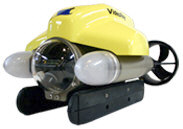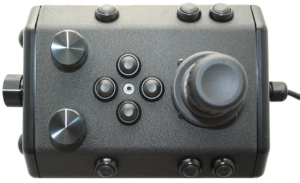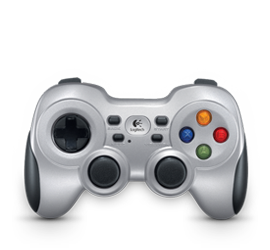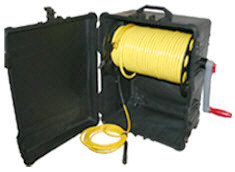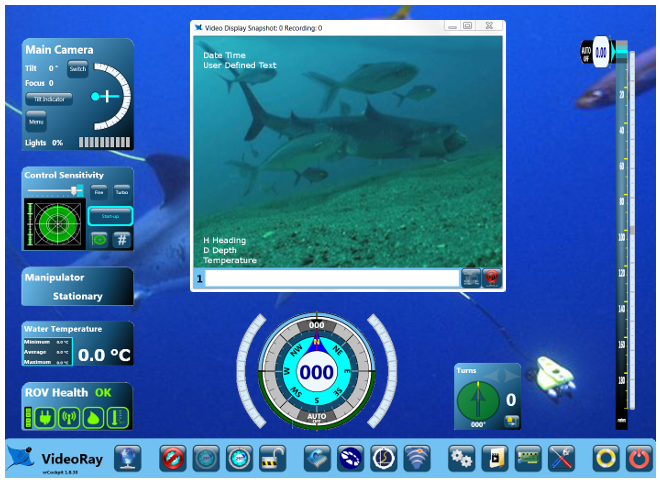Tether ManagementTether management can have a significant affect on the ability to pilot the ROV and achieve the objectives of the mission. Tether Management includes selecting the appropriate type of tether and managing the deployment and retrieval of it during operations.Choosing the right tether and managing it can have a very significant impact on the outcome of an ROV dive. Tether is available in neutral or negative buoyancy. Negative tether sinks but has larger conductors, which means longer lengths can be used without affecting the power available at the ROV. Neutral tether is neutral in fresh water (slightly buoyant in salt water), but has thinner conductors. Neutral tether is available in standard diameter and performance diameter (also called PPT), which is thinner. Thinner tether has less drag, but also has smaller conductors and less power transmission capacity. Selecting the right tether is a balancing act between performance and handling characteristics. General Tether Use Recommendations
Typical Tether ConfigurationsTypical tether configurations are provided in the tables below. When using more than one tether type, tethers should be connected in the order shown from left to right from the control panel to the ROV. Maximum recommended length for a specific configuration is indicated in the "Maximum" column. It may be possible to use more tether under certain conditions, but these are general guidelines for optimal performance. In challenging conditions of swift current, minimal tether lengths are recommended, and using weights or other operating techniques may be required.
Meters
Feet
Tether StorageMake sure the connectors are clean before mating, and clean the connectors after each use by soaking in fresh water. Do not let the tether connectors drag on the ground. Tether should be stored on a TDS or coiled using an over/under or figure eight technique. Coiling the tether in one direction will result in twists that are hard to remove. |
|||||||||||||||||||||||||||||||||||||||||||||||||||||||||||||||||||||||||||||||||||||||||||||||||||||||||||||||||||||||||||||||||||||||||||||||||||||||||||||||||||||||||||||||||||||||||||||||||||||||||||||||||||||||||||||||||||||||||||||||||
|
|
Pro 4 Operator's Manual
General Operations Guide > Universal Practices > Tether Management






